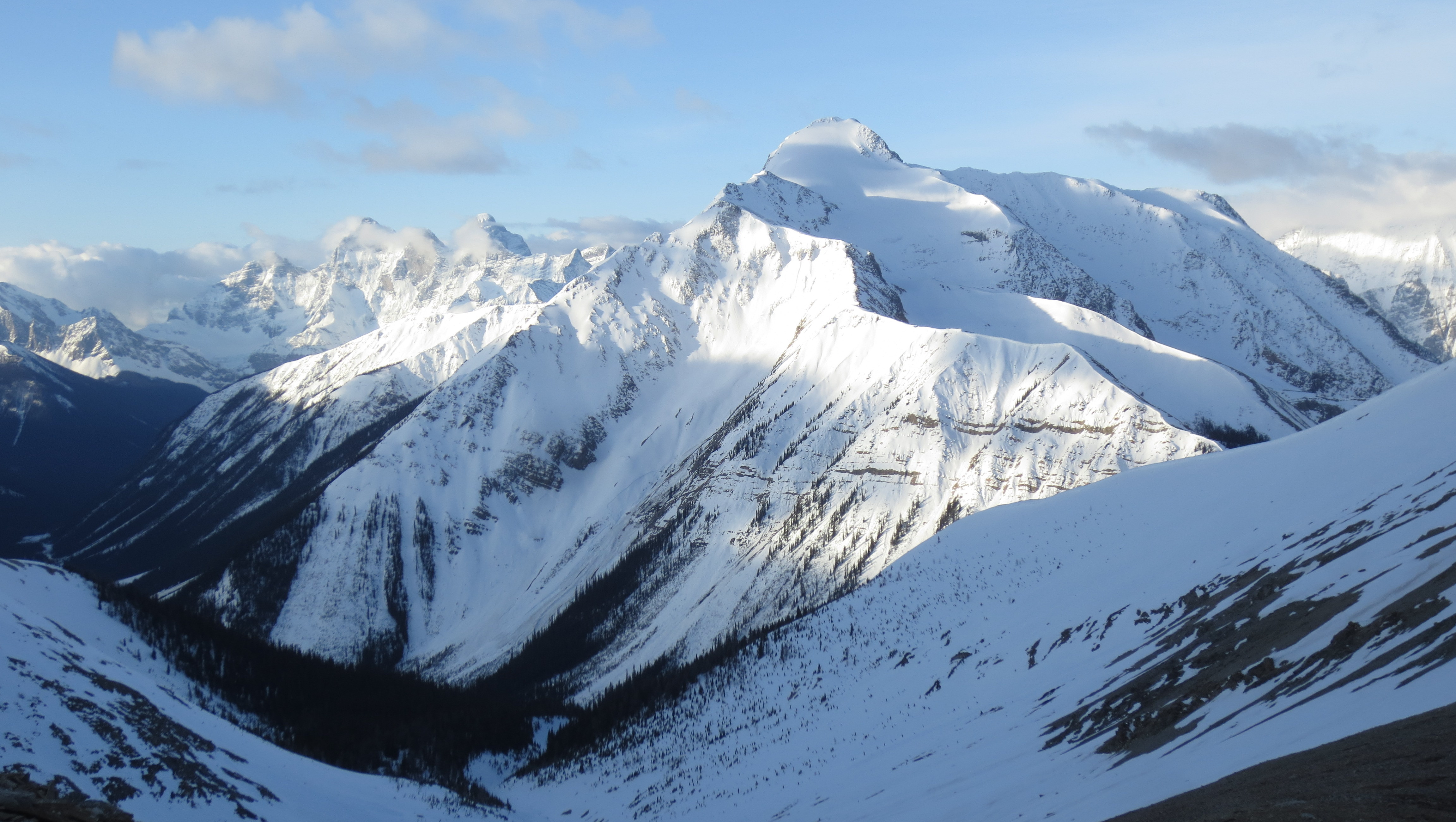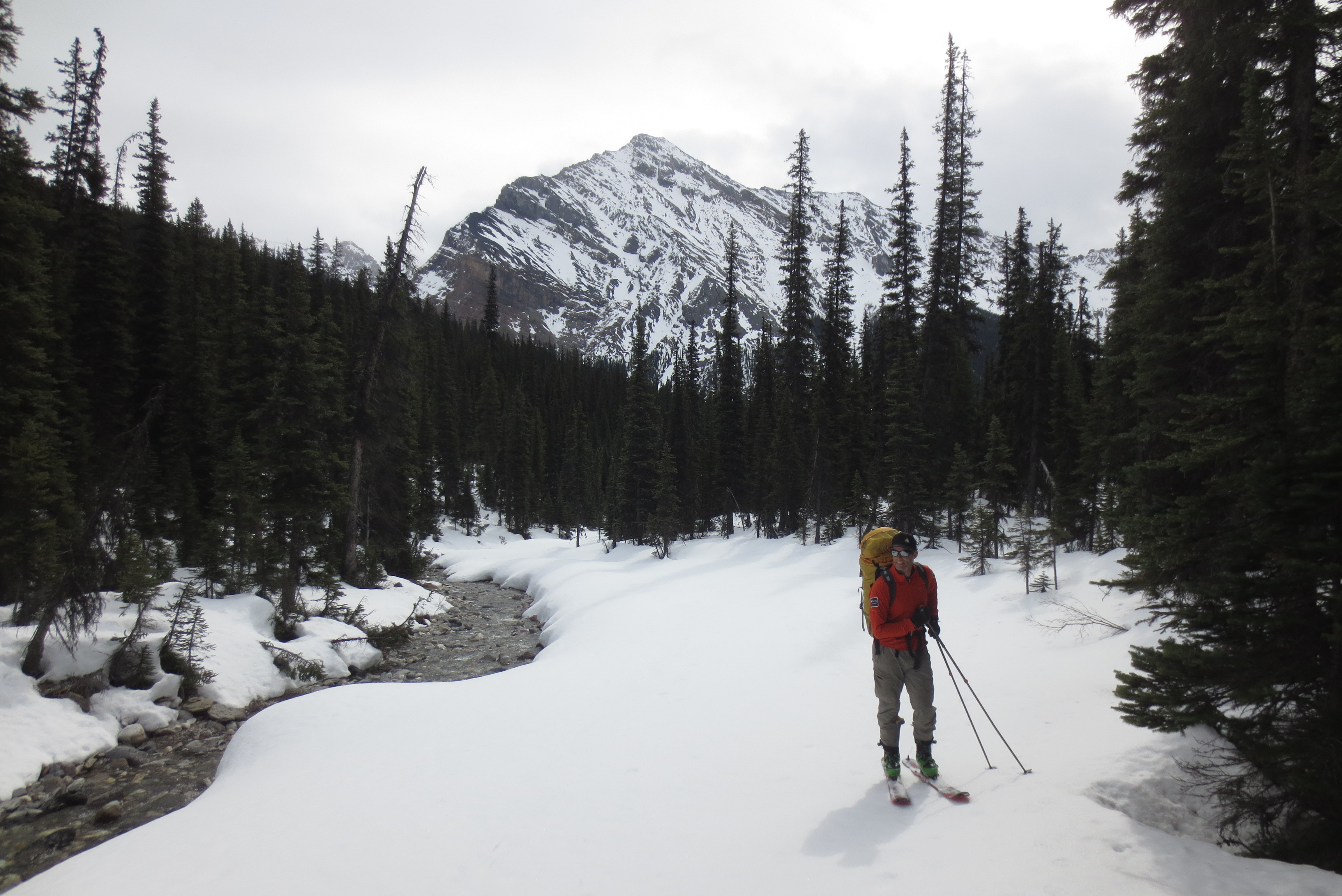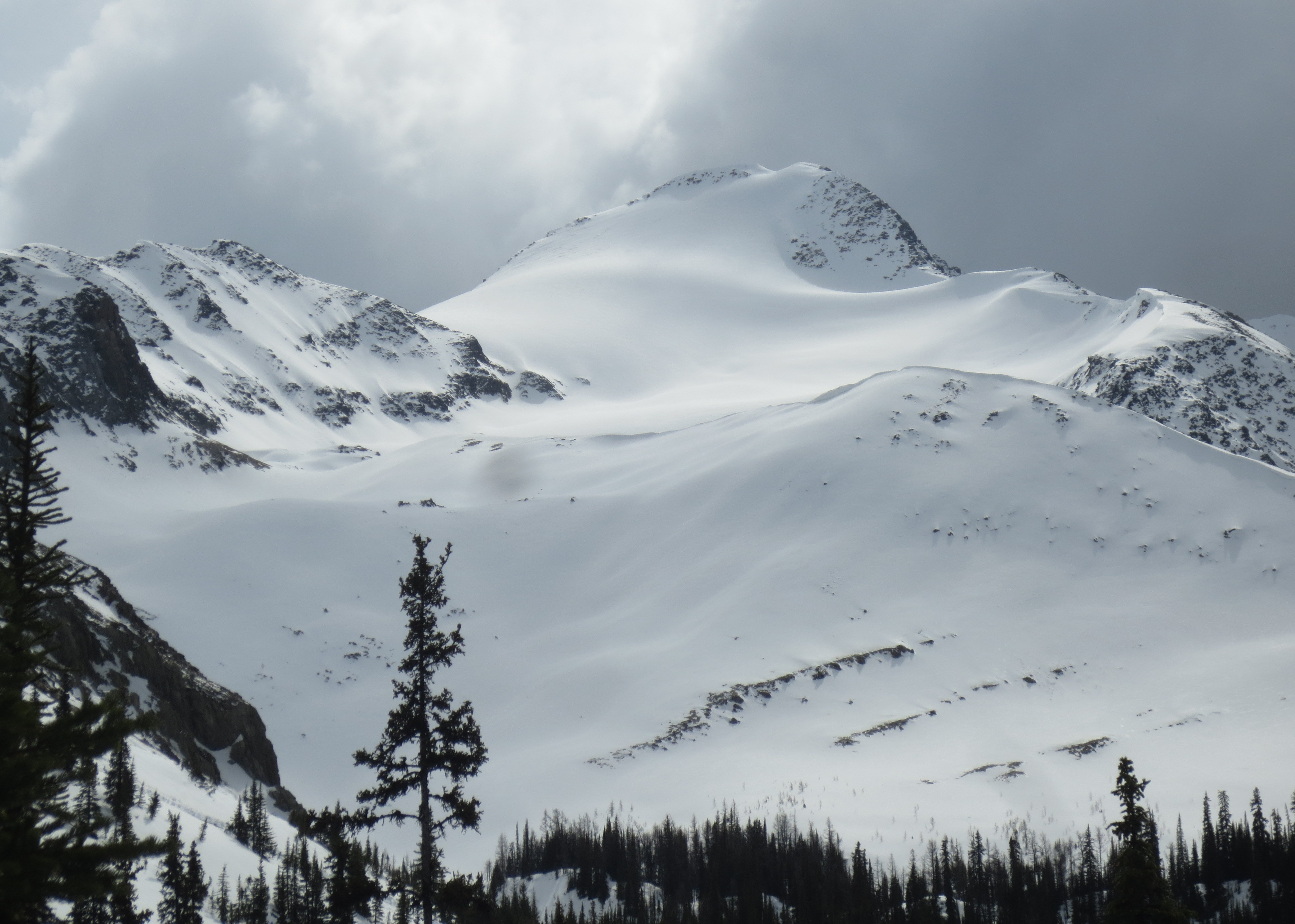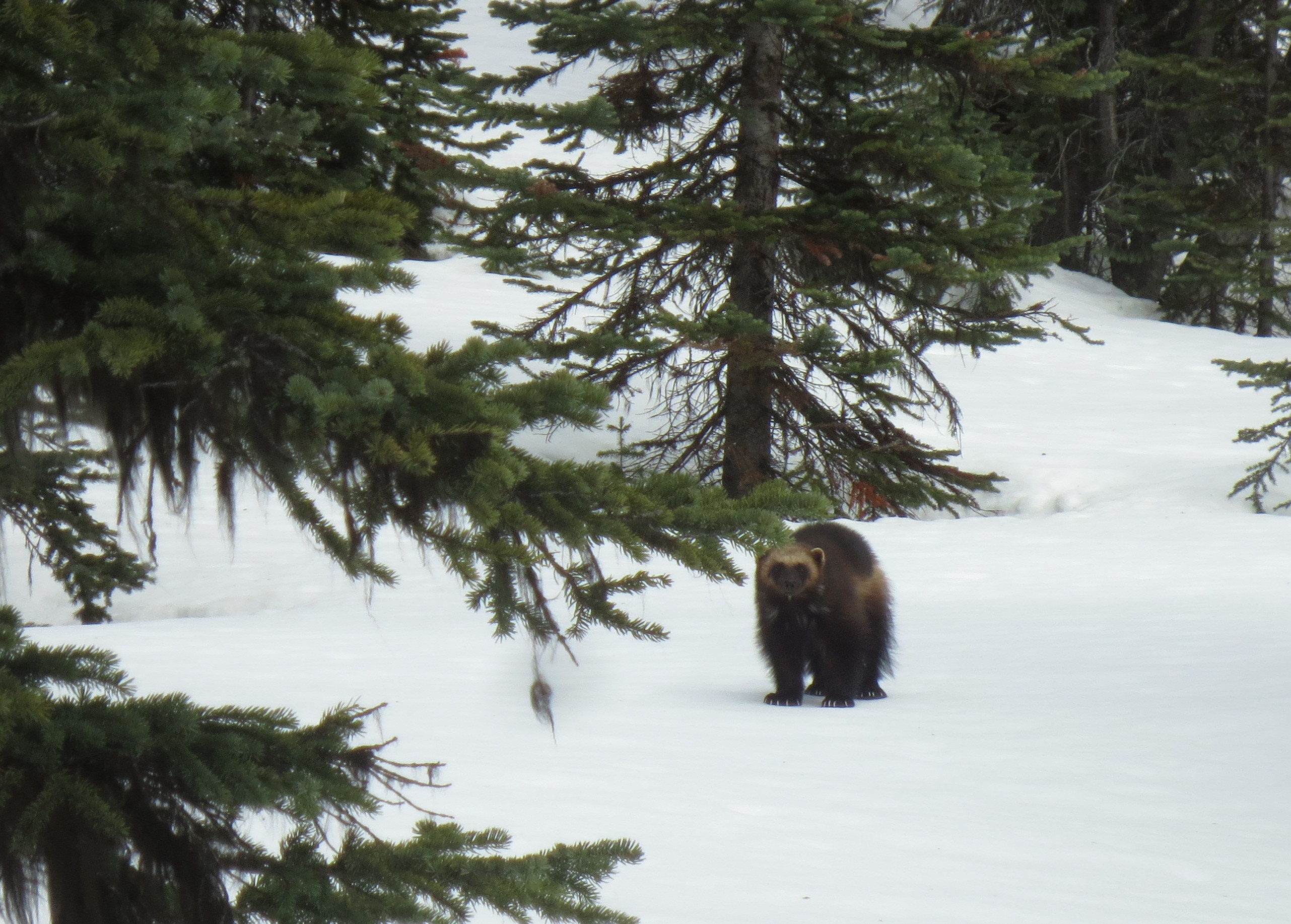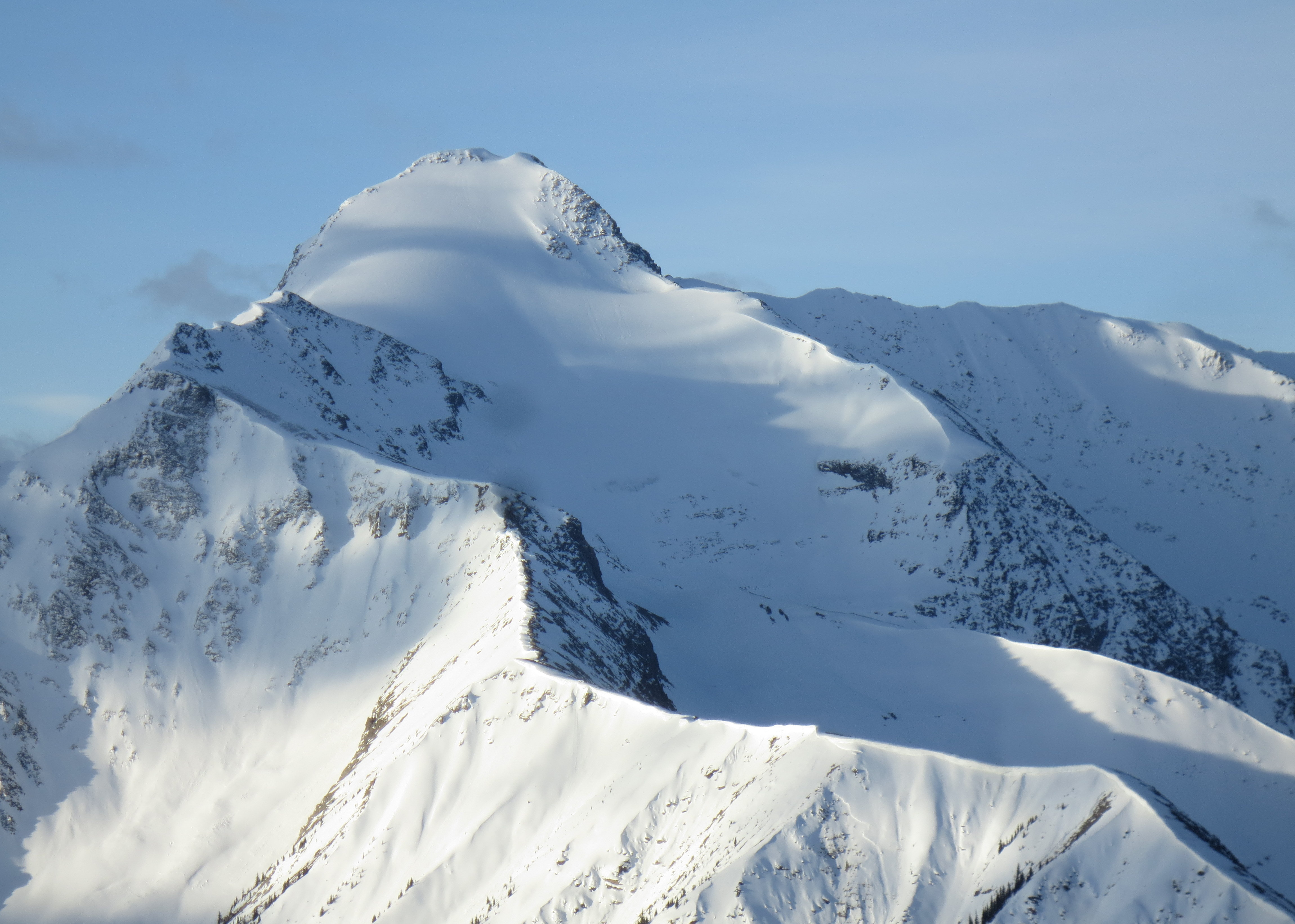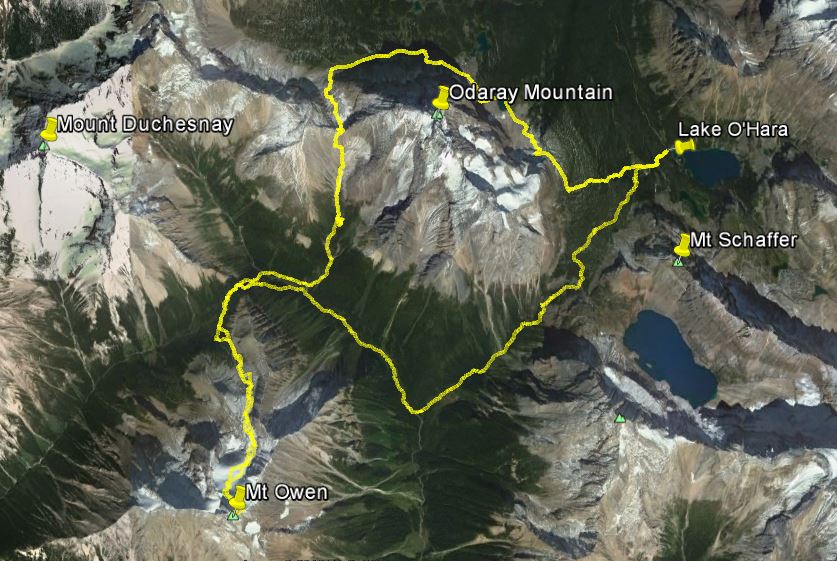Banff and Lake Louise Visitor Safety completed a three day ski trip to Mt Owen in Yoho National Park, April 14-16th.
From Lake O'Hara we skied over McArthur Pass, into McAthur Creek, and up to a camp on the W side of the pass between Mt Owen and Mt Duchesnay at 2150 m. We climbed and skied the North glacier on Mt Owen on the second day, returning to camp just in time to meet a wolverine who was quite curious about the intrusion into its backyard. We spent the afternoon moving camp to a sheltered tree rib south of Odaray Pass at 2220 m. The third day we skied over Odaray Pass to Cathedral Lakes before contouring below Mt Odaray to Morning Glory Lakes, up a shoulder below the Odaray Glacier, and back down Lake O'Hara.
With the well settled spring snowpack and low freezing levels of the past few days we had supportive snow at all elevations (1750 m and above) all day for skiing and bootpacking. This was key for the valley bottom travel where the snowpack is quite thin and for some of the steep moraine slopes in the alpine. Ski crampons, an ice axe and light boot crampons were useful.
Snow tests on the North glacier of Mt Owen at 2800 m did not show any significant shears in the upper 140 cm. There was an average of 240 cm of snow on the glacier. Good skiing on due North aspects above 2200 m with 3-10 cm of dry snow on the surface. Supportive crust skiing or corn skiing on all other aspects and at lower elevations. Only a trace of new snow over the three days.
One loose wet sluff was observed on the East Face of Mt Odaray April 16th. No other avalanches or sluffs were observed during the three days. Our only avalanche concerns were the effects of daytime heating on steep slopes and cornices.

